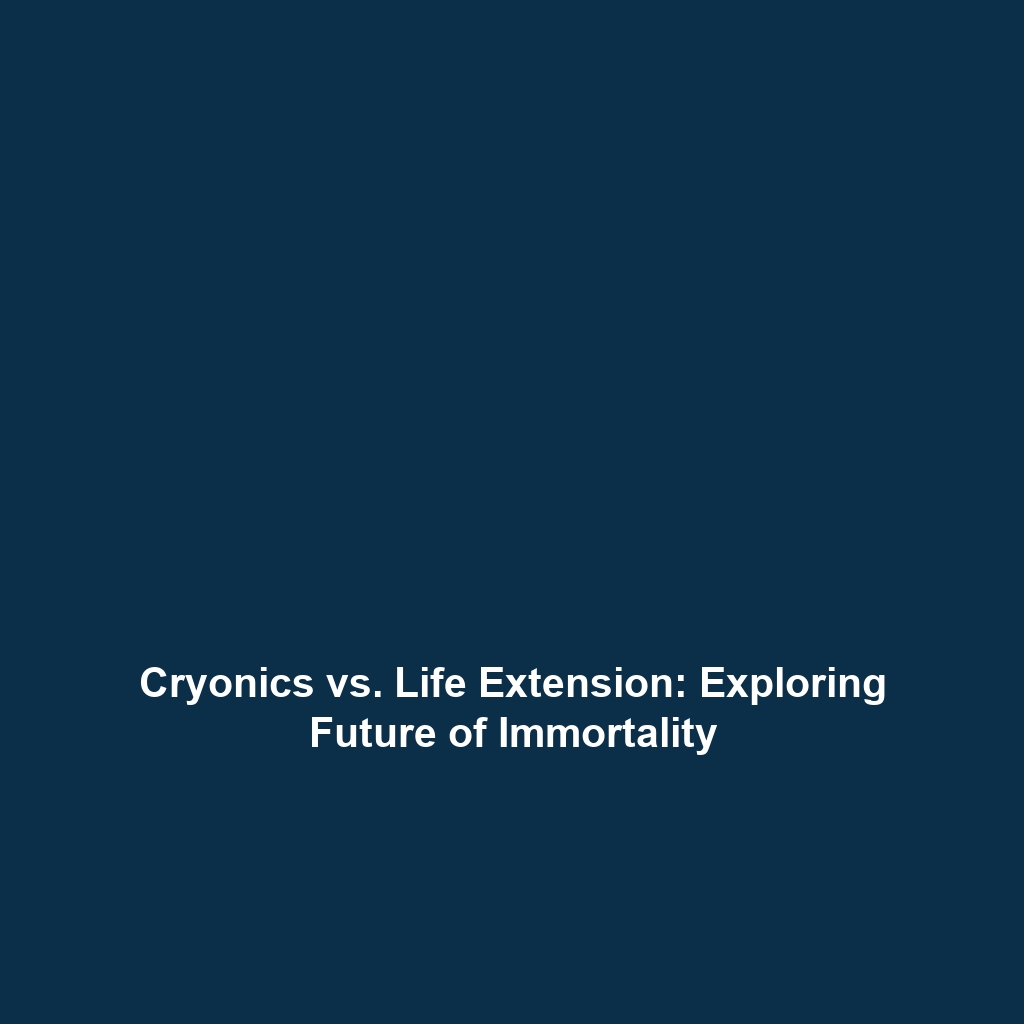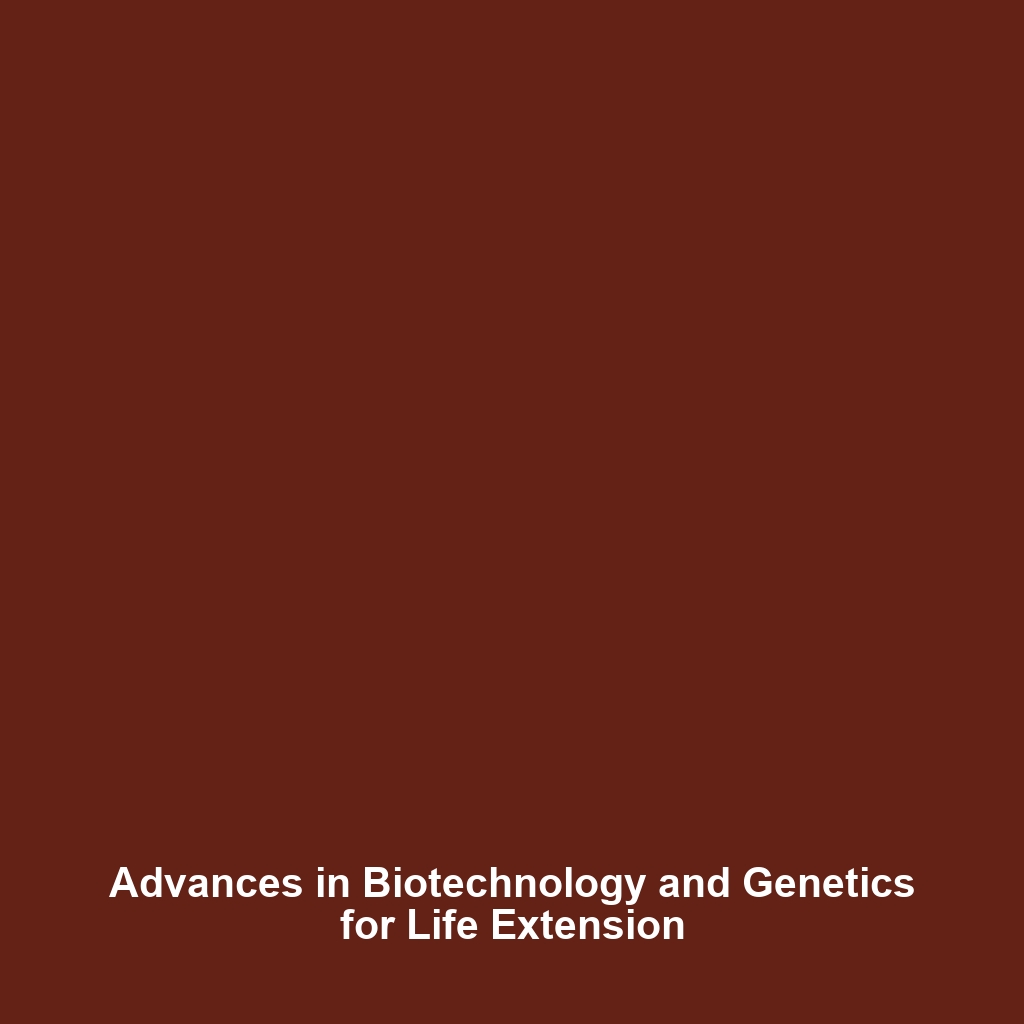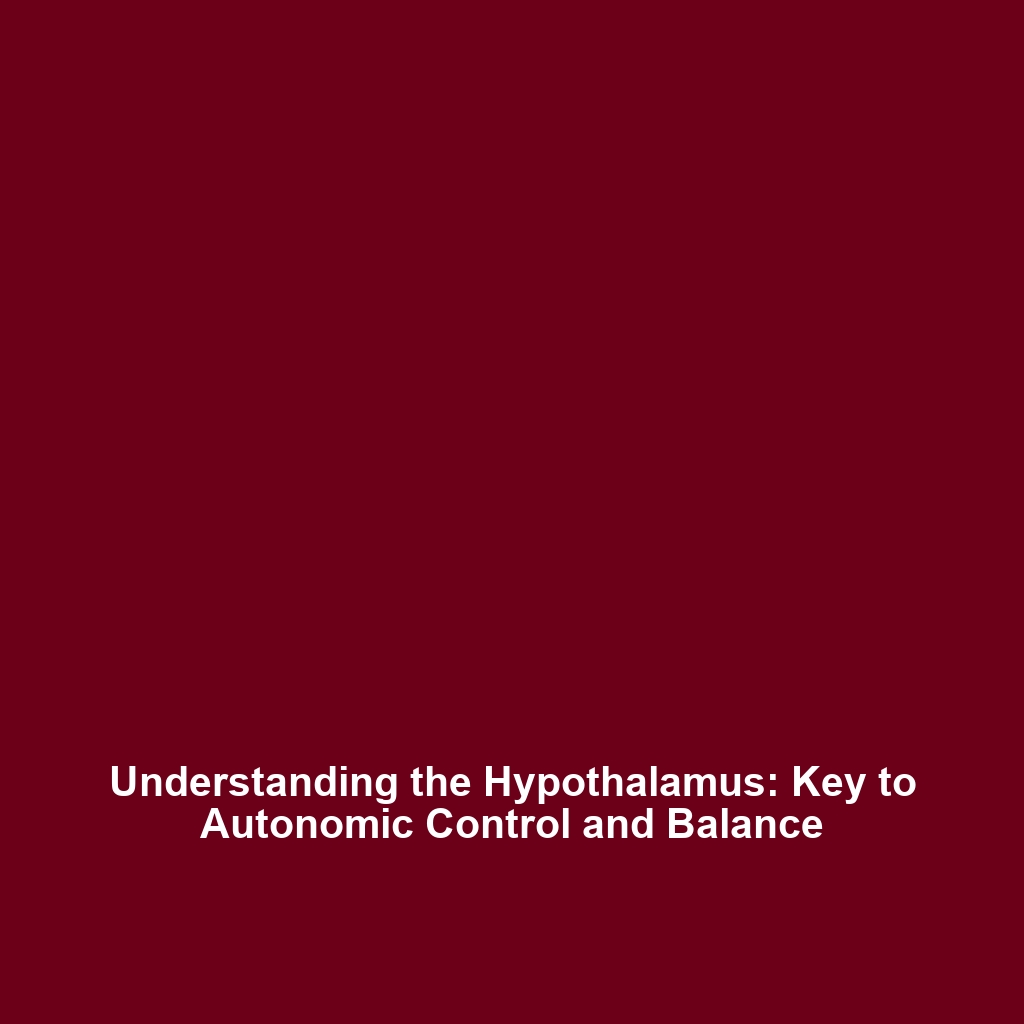Cryonics vs. Life Extension: Understanding Their Significance
The fields of Cryonics and Life Extension are paving the way for revolutionary advancements in healthcare and longevity. As science continues to explore the boundaries of life and death, the debate between Cryonics vs. Life Extension rises in significance. This article delves into the essential concepts, real-world applications, challenges, and future innovations that define this captivating intersection of science and ethics.
Key Concepts in Cryonics vs. Life Extension
Understanding Cryonics vs. Life Extension requires a grasp of several key principles. Here are the foundational concepts:
- Cryonics: The preservation of individuals at extremely low temperatures after cardiac arrest, with the hope of revival in the future.
- Life Extension: Techniques aimed at extending the human lifespan through health optimization, biotechnology, and medical advancements.
- Differences: While cryonics focuses on preservation after death, life extension targets the enhancement of health and longevity during life.
Applications and Real-World Uses
The practical applications of Cryonics vs. Life Extension offer exciting possibilities:
- Cryonics: Cryopreservation of organs for transplantation, aiming to extend the viability of donated organs.
- Life Extension: The development of anti-aging therapies, supplements, and health monitoring systems that promote longer, healthier lives.
Thus, how Cryonics vs. Life Extension is used in Cryonics & Life Extension exemplifies a holistic approach to enhancing human existence.
Current Challenges in Cryonics vs. Life Extension
Despite their potential, the study and application of Cryonics vs. Life Extension face several challenges:
- Scientific Understanding: Limited scientific consensus on the feasibility of successful revival from cryopreservation.
- Ethical Issues: Ongoing debates regarding the moral implications of preserving life through cryonics.
- Technological Barriers: Current technologies may not adequately address the complexities of preserving and subsequently reviving lifespan.
Addressing the challenges of Cryonics vs. Life Extension is essential for advancing both fields.
Future Research and Innovations
The future of Cryonics vs. Life Extension is ripe with potential. Upcoming innovations include:
- Nanotechnology: The use of nanobots for targeted cellular repair post-revival.
- Gene Editing: CRISPR and other techniques potentially reversing the aging process at a genetic level.
- Artificial Intelligence: AI-assisted models predicting the outcomes of cryonics and life extension strategies.
These future-oriented technologies promise to revolutionize the landscape of Cryonics & Life Extension.
Conclusion
In summary, Cryonics vs. Life Extension presents a compelling dichotomy within the broader field of Cryonics & Life Extension. By understanding its key concepts, real-world applications, challenges, and future possibilities, we can better appreciate the nuances of extending human life. For those interested in exploring more, consider reading about current breakthroughs in biotechnology or the ethics of life extension debates.


